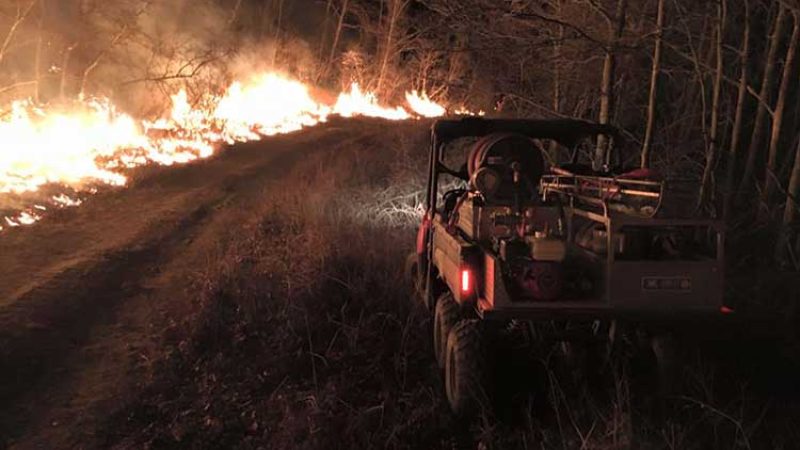KIMTEK CORPORATION PUMP EVALUATION
DAVEY 13HP Honda Driven High Pressure Pump
Vs
CAT UHP – Ultra High Pressure 9 HP Honda Driven Pump
This is a brief explanation about two completely different pump solutions that can be found on our KIMTEK FIRELITE UTV and Brush Truck Skids.
Davey 13 HP
Please note this 13 HP pump flows: 120 GPM @ 40 PSI, 95 GPM @ 108 PSI, 60 GPM @ 133 PSI, 20 GPM @ 146 PSI
If a fire department is looking for a pump that will flow a decent stream of water to a location 30 to up to 40 feet from the nozzle tip, then this is your pump. On a smaller scale this pump will mimic the type of water flow you would be used to getting from your larger apparatus fitted with a 1250 or 1500 GPM pump, except with less GPM and PSI. Still 146 PSI is a respectful pressure to have in order to knock down a grass or brush fire. With the properly matched nozzle, you should find this pump setup to be stingy with water usage while still giving you adequate fire suppression capability.
CAT 9 HP
Please note this 9 HP pump flows: 6.7 GPM @ 1200 PSI
This pump setup speaks to more specialty, close proximity fire suppression where ultra high pressure is required to push the water into the wood, brush and grass to penetrate and eliminate the fire quickly. This UHP system is designed for departments that frequently face fire situations with embedded underground fire that is not easily accessible by traditional fire streams. These are typically forest fires, root fires and deep mossy ground situations. We like to point out that as far as water stream flows are concerned, those departments that have never worked with ultra high pressure systems should be aware of the following: while it is obviously a water conservation situation at the 6.7 GPM, the reach and quality of the water stream is completely different from the traditional pumps. UHP water streams typically have a close to concentrated stream 10 feet from the nozzle, 10 to 20 feet from the nozzle the flow begins to disperse into a mist but still viable, 20 to 30 feet you will see the flow to begin to get to more of a mist but still viable. At 40 feet and beyond it is total mist. A mist is not necessarily a bad thing to knock down a fire, it just does it in a different manner. For more on that please see extended article here. If you have never worked with an UHP system before and before buying, you and your department should borrow a similar sized pressure washer to operate during a training to know if the department would be satisfied with the flows described above.





